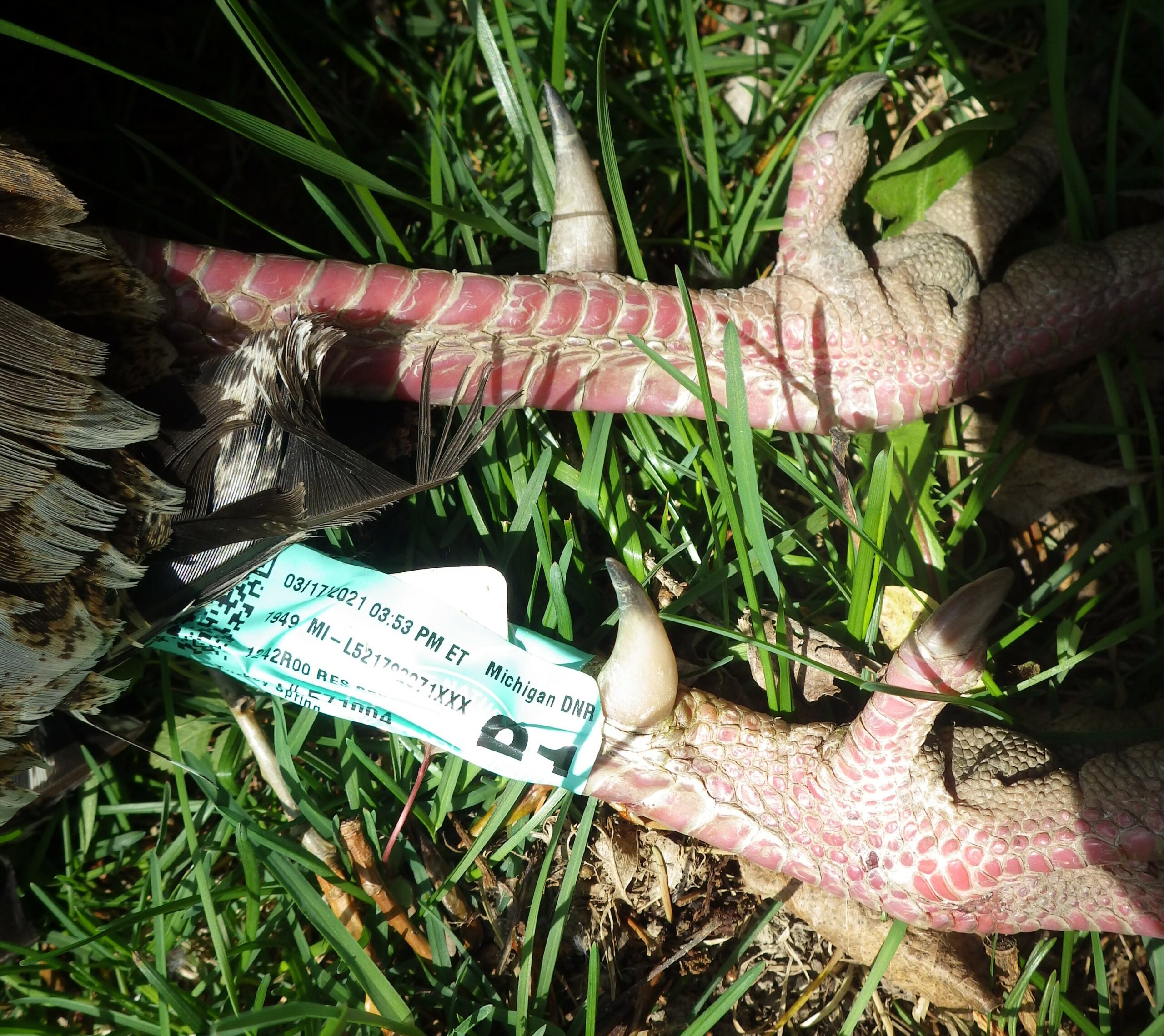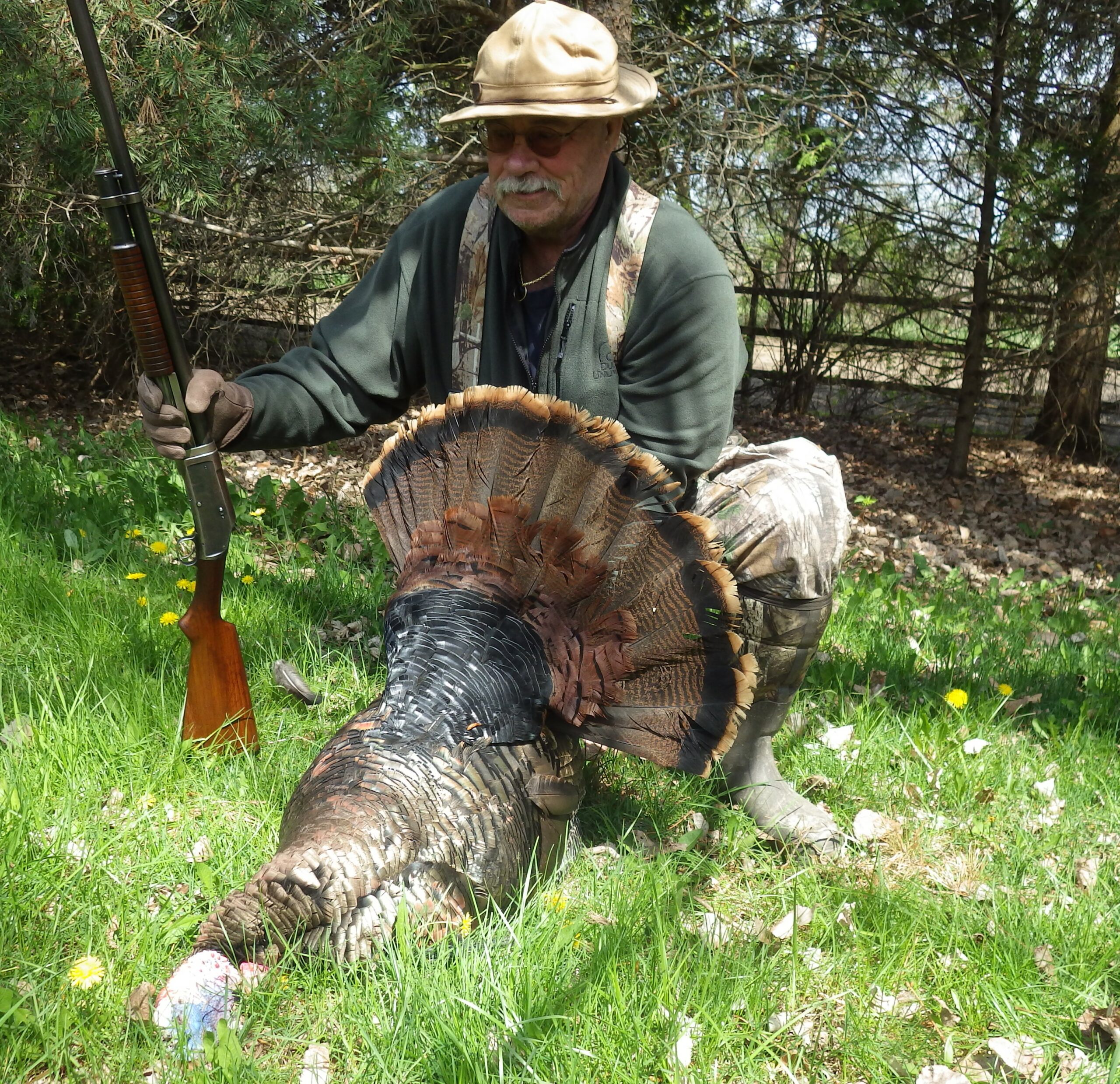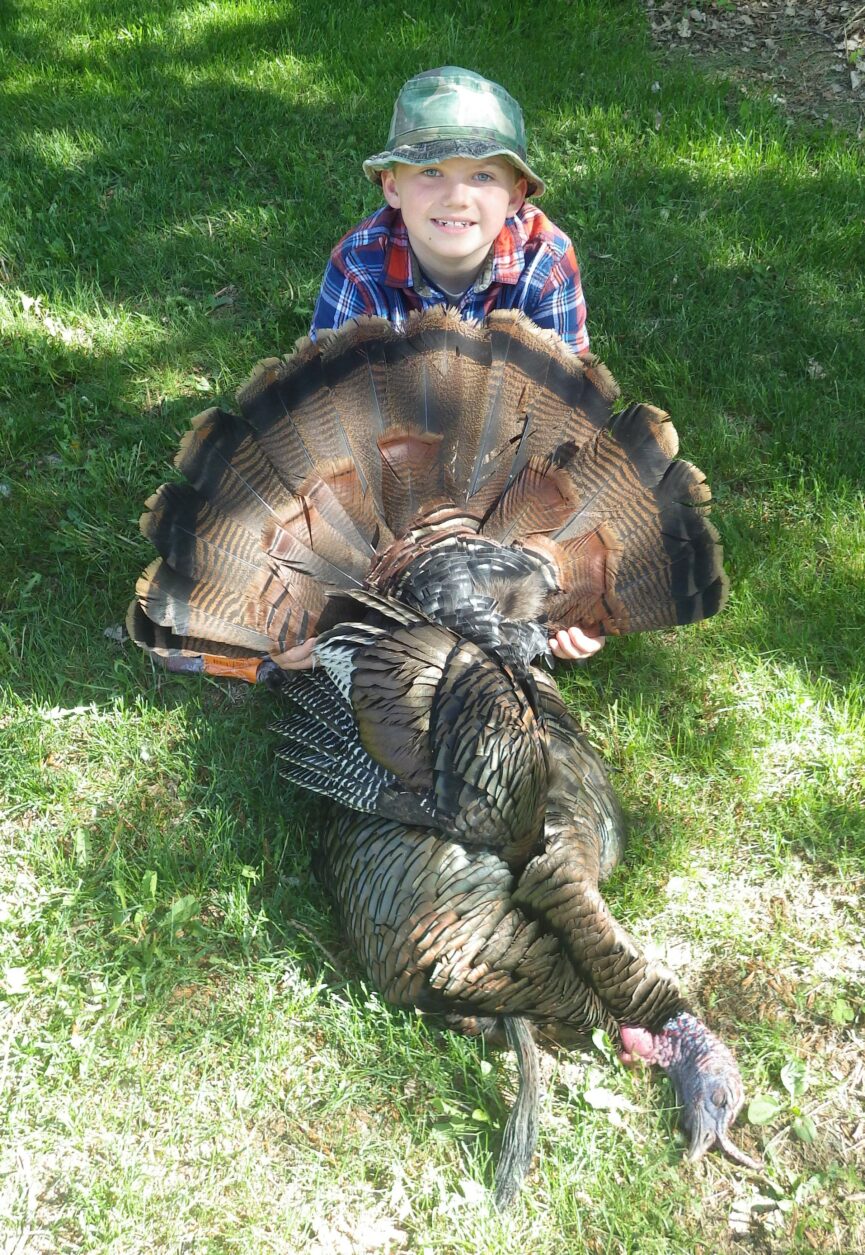…”Hearing that early morning gobble is a big reason I choose to turkey hunt each year”…

By: Tom Lounsbury.
With April finally arriving, I’m in the preparation mode for the impending spring turkey season, which includes getting reacquainted with my preferred shotguns. The title “Turkey Gun” conjures up a variety images in the minds of turkey hunters today. What seems popular is a compact and camouflaged shotgun which is equipped with a very tight-patterning screw-in choke tube. It will often be a 3-inch or 3 and half inch 12 ga “Magnum”, or even a behemoth 10 ga using 3 and half inch shells for the ultimate performance and reach to put very tough and tenacious gobblers down for the count. The typical turkey shotgun often features a sling for allowing hands to be free while roving and calling, or when a lucky hunter must carry a heavy bird out of the woods.
Specialized “turkey” shotshells today are filled with a copious amount of shot to put as many pellets on the target as possible, and when you combine this fact with the tighter constriction of typical turkey-chokes, the result is a very long shot-string, which in the world of turkey hunting, isn’t a bad thing. The reality is, we aren’t talking wing shooting here, and the focus is placing the shot pattern in the neck/head area of a usually stationary bird on the ground. My aiming point is where flesh and feathers join on the neck, just below the head, thereby fully utilizing the entire pattern. So it is more like shooting a single projectile instead of a wide pattern, at least at the closer ranges. For this reason a turkey shotgun is often equipped with rifle-type sights, including low power optics and electronic “red-dots”, for precise shot placement, as well as there are quality sights available for attaching to vent ribs, which will certainly do the trick. Without question, the turkey shotgun and the specialized loads it uses is a continually evolving process which pertains to the growing popularity of the wild turkey.

Personally, I’ve only hunted wild turkeys in Michigan, and I’ve been at it for more than 50 years. This has allowed me to witness the continual evolution of the gear and techniques which have developed while the wild turkey has expanded its numbers and range, not only in Michigan, but nationwide as well, including in places where it was never in before such as Hawaii. The wild turkey in America is, without question, a very successful conservation story and in Michigan today, you don’t have to travel far to find good turkey hunting opportunities.
When I first started spring turkey hunting during the late 1960’s, the options weren’t nearly as good. I was very fortunate to have been drawn for a limited hunt in northern Michigan and had no idea at all of what to expect. My turkey call had to be special ordered at the local hardware store because none were stocked on the shelves, and the shotgun I used was my Granddad’s old 12 ga “Auto-Five” Browning. The load I opted for was high-brass number twos, which was legal back then, and did a good job on waterfowl and red fox, so I assumed it was fine for wild turkeys. I didn’t have an opportunity to bag a gobbler on that hunt, but I became totally smitten with spring turkey hunting because it is a unique and addictive atmosphere.
During the 1970’s, more spring turkey hunting opportunities developed in northern Michigan, and I was often lucky in the draw and my skill began to improve during a continual learning process, as well as turkey calls could be found on store shelves. Besides my Granddad’s Browning, I also used a 12 ga side by side double barrel featuring modified and full chokes, and a 12 ga Model 37 Ithaca pump with a 30-inch full choke barrel. All three shotguns use 2 and three-quarter inch shells and quickly became my favorite turkey guns for the next 25 years. They did their part if I did mine, and I never had a maneuverability problem with lengthy barrels, as I appreciate a long sighting radius. Except for the double-barrel, which I painted olive drab, the other shotguns have a dull matte wood/blue finish which I found doesn’t alert and scare off any turkeys.
I never used a 3-inch magnum shell for turkeys until I acquired a 12 ga Remington 870 Express 30 years ago. It also featured the newly developed screw-in choke tubes which are truly a versatile blessing for avid shotgunners today. One thing I discovered right away is that each shotgun is an individual and has a preference for specific shot-sizes and even brands when you pattern them. So preseason patterning is an annual affair for me, even though I already know how each shotgun patterns with certain loads, because I want to know I’m still in tune, which is a very important part of turkey hunting. It is as important to me as sighting in a long used deer gun before each season, and knowing all is functioning well, including my shooting eye. There are also new turkey loads continually coming out which I enjoy testing, and trust me, folks, patterns do change with new loads.
I also practice “switch-hitting”, because wild gobblers don’t always come in at the anticipated angle. Being right-handed, I’ve had cagey gobblers come in silent from behind me on my right side, and by ever so slowly switching the shotgun to my left shoulder, they were toast… well, maybe anyway, nothing is for sure in the hunting arena. Doing this effectively requires practice, and in my case, when I partially close my dominant right eye, my left eye takes over. I typically do the switch-hitting practice with economical shotgun loads because my goal is simply to hone this ability/skill, especially when some “turkey” loads cost as much as $10 each.
A favorite turkey gun I use frequently today is a Remington Spartan over and under 12 ga in 3-inch magnum which I had custom camouflage-painted, and when it is choked standard full and full (which has reach but is more forgiving than “super-full” chokes), it offers two quick shots, and with sufficient patterns to 35 yards. It is also easy to quickly load or unload in the field. Then there is my vintage (1936) 12 ga Winchester Model 97 pump shotgun equipped with a 30-inch, full choke barrel, which offers wonderful patterns and reach using (2 ¾ inch) lead number fives. I used it two years ago to bag my largest spring gobbler ever, which dropped on the spot with a headshot at 28 yards.
Michigan spring turkey hunting opportunities began to really pick up in the 1980’s and better yet during the 1990’s, including closer to home in my Thumb area.
It was during the Thumb’s first turkey season when my sons Jake and Josh were just getting into hunting and lucked out on the draw. By that time nothing larger than number four birdshot could be used for turkeys, which wasn’t a bad thing in my mind. It was while patterning my sons’ 20 ga shotguns that I became really impressed with this smaller bore for turkeys. Both pumps (one a Mossberg 500, the other a Remington 870) proved to be very effective turkey-getters out to 30 yards and even slightly beyond, which works for me. I often use a 20 ga today for turkey hunting because I appreciate the lighter weight and recoil, and I’ve taken enough turkeys with this smaller bore to know it is fully up to the task.
The longest kill-shot I’ve ever made on a wild turkey with any shotgun is 32 yards, with the remainder being taken at well under 30 yards, because I’m not into long range “turkey shoots” at all. However, the continual evolution of turkey ammunition has been increasing the range, and in some cases, dramatically so. An example is Federal’s new Heavyweight TSS turkey loads which use a denser than lead tungsten alloy, a special Flex Wad and smaller shot sizes, to achieve denser patterns at longer ranges. Federal offers a .410 TSS turkey load which is lethal on gobblers to 40 yards, and the 12 ga version reaches out a tad further.
A point in fact about “turkey guns” though, is a girl youth hunter who used a single-shot H&R .410 stoked with regular lead number sixes to knock a gobbler spurs-up at just under 20 yards, thanks to the calling efforts of her grandfather. The big gobbler never knew what hit him, and to me, this scene is what turkey hunting is all about. All firearms for hunting require the user to understand any limitations and to stay within them before touching the trigger. So the reality of what can be determined a turkey gun is whatever the hunter has available and also what he or she is comfortable with.
There is certainly nothing wrong with today’s specialized turkey guns because they are top performers, and the “turkey” ammunition is the best I’ve ever seen. It is just that spring turkey hunting to me is the art of calling gobblers in close as possible and making the shot, according to whatever shotgun is being used, a done deal.
- Crossbow hunting adventures and discovering an ancient and simplistic design made better than ever - October 4, 2025
- Putting a focus on targeting prime venison - September 19, 2025
- Liberty hunt memories – deer camp jokes and paybacks - September 13, 2025

